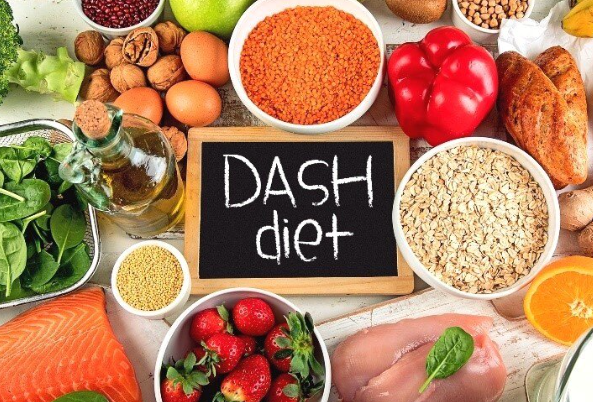DASH Diet: Benefits, Challenges, and Tips for Easier Adoption
The DASH (Dietary Approaches to Stop Hypertension) diet is renowned for its focus on heart health and its effectiveness in reducing blood pressure. As a scientifically-backed eating plan, it emphasizes the consumption of nutrient-rich foods that are beneficial for overall health. This article examines the primary benefits of the DASH diet, acknowledges the challenges individuals may face, and offers practical tips for making the transition to this healthy lifestyle easier.
Understanding the Benefits of the DASH Diet
Adopting the DASH diet comes with numerous advantages, many of which have been proven through extensive research. Let’s look into some of these significant benefits:
Heart Health Improvement
One of the key purposes of the DASH diet is to support heart health. By focusing on the reduction of sodium intake and increasing the consumption of foods rich in potassium, calcium, and magnesium, the DASH diet helps in lowering blood pressure. This is crucial for reducing the risk of heart disease and stroke.
Nutritional Balance
The DASH diet promotes a well-balanced intake of nutrients. This is achieved through a diverse menu that includes:
- Fruits y vegetables
- Whole grains
- Lean proteins like chicken, fish, and beans
- Low-fat dairy products
- Nuts and seeds
Weight Management
For those looking to manage their weight, the DASH diet offers a sustainable and realistic approach. By focusing on nutrient-dense food options, individuals can achieve healthy weight loss without feeling deprived. This diet prioritizes quality over quantity, encouraging smaller portions of healthier food.
Other Health Benefits
In addition to heart health and weight management, the DASH diet has been linked to other health benefits, such as:
- Reducing LDL (bad) cholesterol levels
- Lowering the risk of type 2 diabetes
- Enhancing overall metabolic function
Challenges of Adopting the DASH Diet
While the DASH diet has numerous benefits, some individuals may face challenges during the transition. Here are notable obstacles and how to address them:
Adjusting to Lower Sodium Intake
For many, reducing sodium can be one of the most challenging aspects of the DASH diet. The average diet often includes high levels of sodium found in processed and restaurant foods. Transitioning to lower sodium levels can be difficult but is manageable with the right strategies.
Initial Withdrawal Symptoms
People accustomed to processed foods might experience withdrawal symptoms when they first switch to the DASH diet. This could include cravings and energy fluctuations due to reduced sugar and sodium intake.
Grocery Shopping and Meal Preparation
Another common challenge is adapting grocery shopping habits and meal preparation routines. The emphasis on fresh ingredients can be time-consuming, which may be daunting for those with busy lifestyles.
Tips for Easier Adoption of the DASH Diet
Transitioning to the DASH diet doesn’t have to be overwhelming. Here are some useful tips for a smoother and more successful adoption:
Gradual Sodium Reduction
Instead of a sudden decrease in sodium, try a gradual reduction. Begin by increasing the use of herbs and spices to flavor your meals. Choosing fresh or frozen vegetables over canned ones can also help reduce sodium intake.
Planning and Meal Prep
Investing time in planning and preparing meals can greatly aid in sticking with the DASH diet. Set aside a day each week to plan your meals and prepare components in advance. This makes it easier to maintain the diet, even on busy days.
Experiment with Flavors
To make DASH-friendly meals more enjoyable, experiment with different herbs and spices. This adds variety and keeps meals exciting. Discover new recipes specifically designed for the DASH diet to keep your meal plan interesting.
Educate Yourself on Food Labels
Learning to read and understand food labels is crucial for reducing sodium intake and making healthier choices. Look for products labeled as low sodium or no added salt, and aim for foods that fit within the DASH guidelines.
Support Systems and Resources
Connecting with others following the DASH diet can provide encouragement and ideas. Join online forums or local groups for shared tips and motivations. Using recipes and meal plans available online can also simplify the process.
Professional Guidance
Consider working with a nutritionist or dietician who can offer personalized advice and assist in tailoring the DASH diet to your specific needs and lifestyle.
Maintaining Motivation
Finally, maintaining motivation is essential for long-term success on the DASH diet. Set achievable goals, track your progress, and celebrate milestones to stay encouraged. Reminding yourself of the significant health benefits and improved well-being can help reinforce your commitment to this lifestyle change.
The DASH diet is not just a temporary solution but a lifelong strategy for achieving optimal health. By understanding its benefits, acknowledging potential challenges, and implementing practical tips, you can successfully navigate your transition and enjoy a healthier, more fulfilling life.









